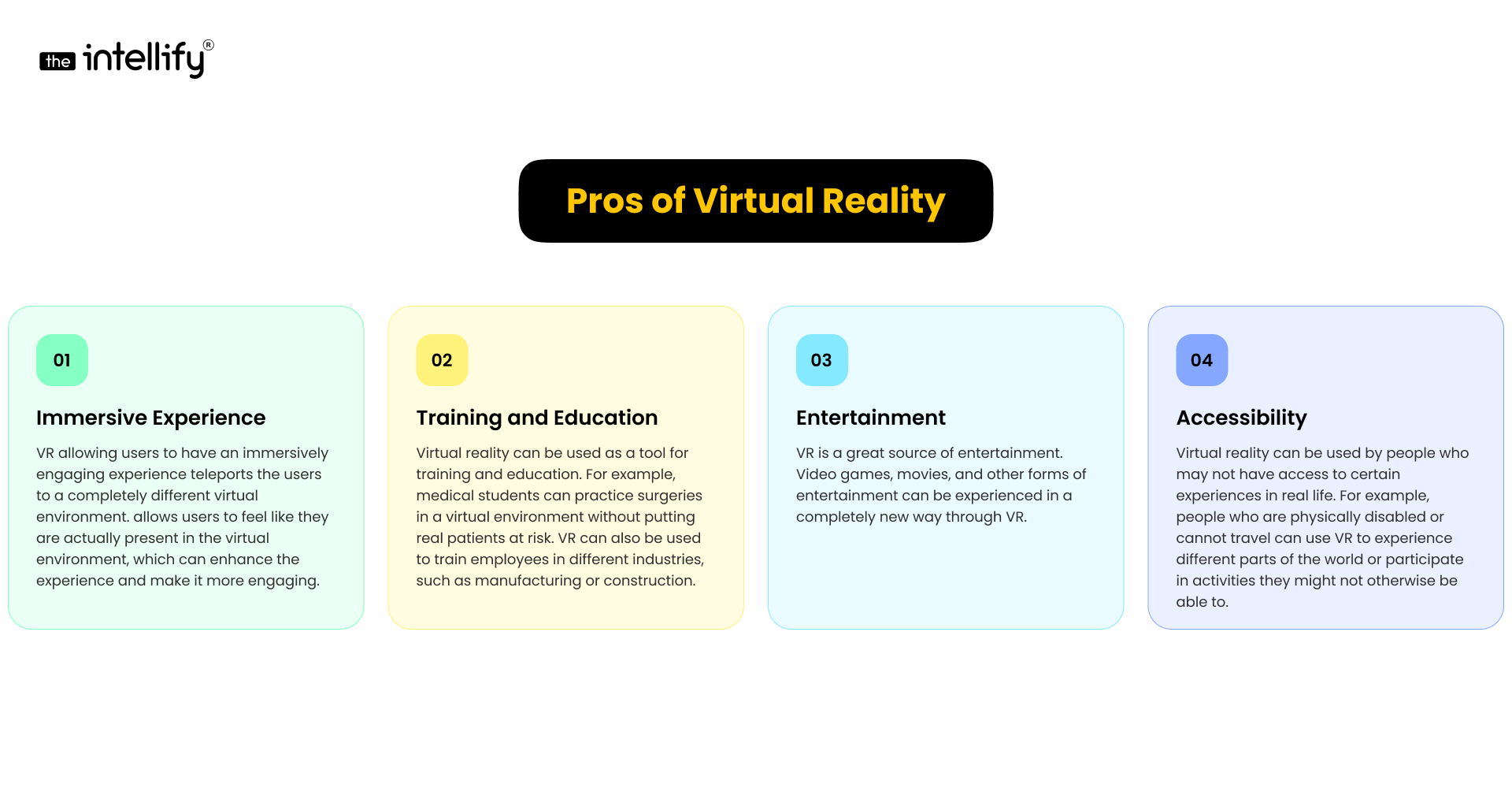Virtual Reality (VR) technology is revolutionizing the way businesses operate. VR can be used for various purposes, from training and design to collaborations. The Intellify has played its share of developing some extraordinary Virtual Reality App Development solutions for different businesses, helping them generate a curious and engaging channel to connect with their customers and users with their products and services.
In this blog post, we will explore 5 advantages of VR in business sectors that can improve efficiency and productivity.
1. Enhanced Training and Education
VR can provide a safe and cost-effective way to train employees. For example, VR can simulate dangerous situations, such as handling hazardous materials, without putting employees in danger. VR can also be used to teach employees how to use new equipment or software in a virtual environment, which can be more efficient than traditional classroom training.
The Intellify has developed a few good training and simulation solutions for easy and immersive training modules. Let us know in the comment section if you want us to share the experience captured.
2. Improved Product Design and Prototyping
VR can save time and money by allowing designers to quickly make changes and test different scenarios without the need for physical prototypes. Additionally, with a good number of experiences, The Intellify also believes that VR can provide a more realistic and immersive experience than traditional 2D design tools, which can help designers better understand how their designs will look and function in the real world.
3. Better Collaboration and Communication
VR can facilitate collaboration and communication among team members and clients who are located in different geographic locations. By using VR, team members can work together in a virtual environment and collaborate on projects as if they were in the same room. This can lead to better communication, increased productivity, and reduced travel costs.
4. Increased Sales and Marketing Effectiveness
VR can be used to create virtual product demos or showcase virtual environments that potential customers can explore. This can help businesses better communicate the value of their products and services and increase sales effectiveness.
5. Improved Customer Experience
VR can be used to create virtual showrooms or provide virtual tours of products or services. This can help businesses differentiate themselves from competitors and provide a more engaging and memorable experience for customers.
In conclusion, VR technology offers many advantages for businesses, including enhanced training and education, improved product design and prototyping, better collaboration and communication, increased sales and marketing effectiveness, and improved customer experience.
By incorporating VR into your operations, businesses can improve efficiency and productivity and gain a competitive advantage in your industries. And which simultaneously leads to a win-win situation for both of us.
Let us know your thoughts in the comment section, or Contact Us today.








